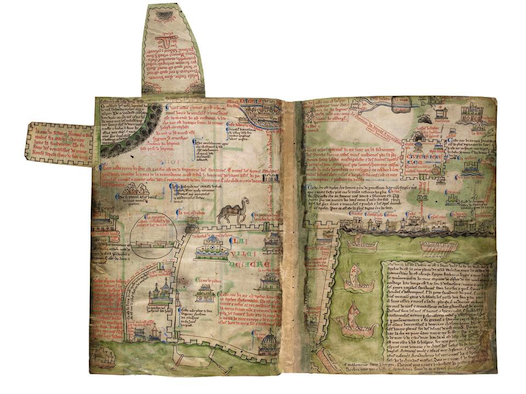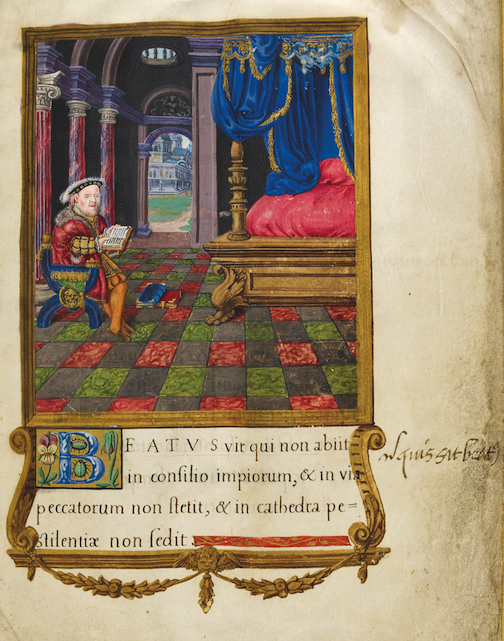The British Library is currently hosting a fascinating exhibit entitled “The Royal Manuscripts: The Genius of Illumination.” This relates to hand-written illuminated manuscripts dating from the 9th to the 16th centuries, which comprised the reading material of British monarchs. The exhibit is drawn almost exclusively from the library’s holdings of lavishly illustrated manuscripts and books.
It is a real privilege to see these beautifully hand-copied items close up. Since it is not over crowded, each gem can be perused in detail. Over 150 manuscripts are on display. It includes Bibles, histories, Psalters (a volume containing the Book of Psalms), genealogies, tales of mythological heroes, scientific works and accounts of coronations. One interesting point to emerge was the large number of French manuscripts in the collection.
One of the major highlights of the exhibition is a travel map itinerary by Matthew Paris for 13th-century pilgrims who wished to journey from London to Jerusalem. It shows the detailed route through England, France and Italy. On arrival at the Italian port of Apulia, pilgrims embarked on a sea voyage to the Holy Land. The travel map consists of several pages each composed of parallel vertical columns that are read left to right from the bottom to the top.

This travel map highlights important landmarks including cities on route. The concluding section shows a map of Acre and Jerusalem. Acre, being the capital of the Crusader Kingdom of Jerusalem, receives considerably more prominence than Jerusalem, the climax of the pilgrimage. The reason is that by the time the map was drawn, Jerusalem had been captured by Saladin.
Another fascination jewel in the exhibit is the small beautiful Psalter belonging to Henry Vlll. The page on view shows a seated portrait of Henry depicted as the biblical King David. Adjacent to his portrait, Henry inscribed in the margin in Latin in his own hand "Note who is blessed." Does Henry refer to King David or to himself?

Of the many exceptional bibles on exhibit, one of the most eye catching is the magnificent bound volume belonging to Henry VIII’s Lord Chancellor, Cardinal Wolsey. In the margins of the displayed pages are annotations made by both Henry and the Chancellor. This suggests that these two powerful men consulted this bible while building an argument supporting Henry’s divorce from his first wife, Catherine of Aragon.
Since only two opened pages of each manuscript can be viewed from each volume at one time, there are several computer touch screens throughout the exhibit that permit detailed viewing of some of the books and manuscripts.
“The Royal Manuscripts: The Genius of Illumination,” closes on March 13, 2012.
Part of this article was originally published in The Jerusalem Post.
Figures:
Fig 1: Matthew Paris: Map of the Holyland,
British Library, 14 C. vi i , f f. 2–5v
Fig 2: The Psalter of Henry VII: Henry VIII as David,
London c. 1540, Royal 2 A xvi © British Library Board.
Note the Latin inscription in Henry’s hand in the margin. See text for details.

Hello im from Andhra pradesh can i apply for this post? could you please give me reply